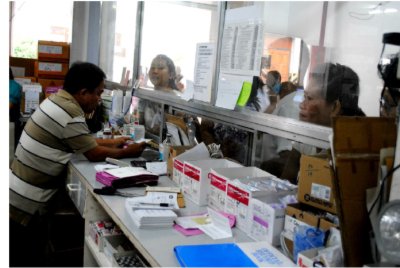| |
.. |
|
Medicine
Monitoring Project 2 concludes this month
|
|
by Edgar E. Camenting, NAMFREL Project
Coordinator |
|
from
NAMFREL Election Monitor Vol.2, No.23 |
|
. |
Namfrel's Medicine Monitoring Project 2
ends this October. The project was implemented in 28 Department of
Health (DOH) hospitals and Centers for Health Development (CHDs)
across the country with a commitment of support from DOH. The
implementation of the project was supported through a grant from the
Partnership for Transparency Fund (PTF). The success of the project
was due to the participation of Namfrel chapters, partners and
individual volunteers in making the process of procurement and
contract implementation more transparent and compliant to the
provisions of the Government Procurement Reform Act 9184.
As of July 2011, a total of Php 1 billion pesos worth of Approved
Budget for the Contract (ABC) for pharmaceutical and
non-pharmaceutical products had been observed in 28 select hospitals
and CHDs.
Procurement Observations
Based on feedback from volunteers, some volunteer-observers were not
invited to the postqualification stage despite constant coordination
with the Bids and Awards Committees (BACs). This was evident in four
NCR and a northern Luzon-based hospital.
. |
Namfrel team leaders from these
hospitals were just advised to
secure specific documents to track
the result.
Furthermore, Namfrel observed that
the BAC of another northern
Luzon-based medical center awarded a
contract worth Php 43.9 million for
a project with an ABC of Php 40.3
million, a difference of Php 3.6
million. Moreover, in a northern
Mindanao hospital, the BAC
recommended to award a contract
worth Php 3.1 million to a project
with an ABC of only Php 2.8 million
for the procurement of drugs and
medicines. Similar cases were
observed in the past.
In addition, despite a letter of
request, documents such as minutes
of the BAC meeting, Annual
Procurement Plan, and Notices of
Awards were not immediately provided
by several hospitals and took months
before they were handed to
volunteers. |
 |
|
Contract
Implementation Observations
As of July 2011, NAMFREL had monitored a total of Php 230.5 million
delivered medicines or 44% of the Php 520.8 million awarded
procurement contract in twenty-two (22) DOH hospitals and CHDs.
Meanwhile, Php 124.8 million or 23% of the Php 520.8 million
procurement contracts were allocated to DOH hospital beneficiaries
based on inventory reports of nineteen (19) DOH hospitals and CHDs.
Based on feedback from volunteers, documents from seven hospitals
and CHDs needed in the monitoring were not provided immediately to
them resulting to delay in monitoring and submission of reports.
Namfrel observed that hospitals and CHDs had varying forms and
practices in dispensing medicines, thus volunteers found it
difficult to determine if there was an existing procedure for
requesting and dispensing of medicines. Furthermore, these documents
were not properly accomplished by the hospital personnel. In one
hospital for instance, the purpose of request and issuance of
medicines was not indicated in a report.
Moreover, most of the acceptance reports from an NCR-based health
institution were not signed by the Chief of the Inspection Unit
validating goods inspected by the agency inspector were complete and
met the specification.
In past years, Namfrel's medicine monitoring project also played a
crucial role in helping the DOH improve its warehousing and
logistics system as well as in helping hospitals to come up with
reasonable bid prices without sacrificing the quality of medicines. |
| |
.
.
. |
|
| |
| |
|
|

